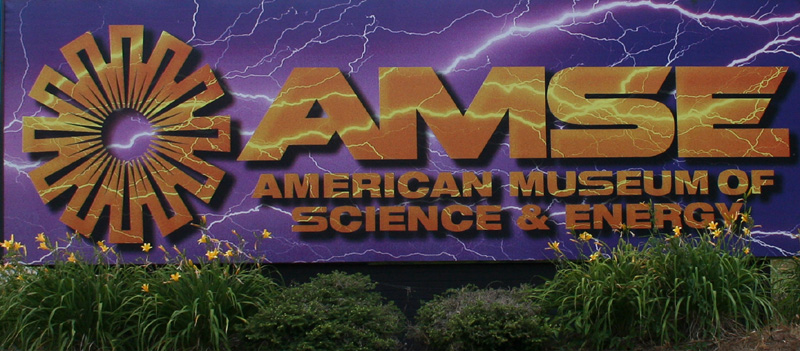 |
The sign for the American Museum of Science
and Energy. This is one of the better nuclear museums out there.
It is also the staging are for tours of the Oak Ridge
facilities. |
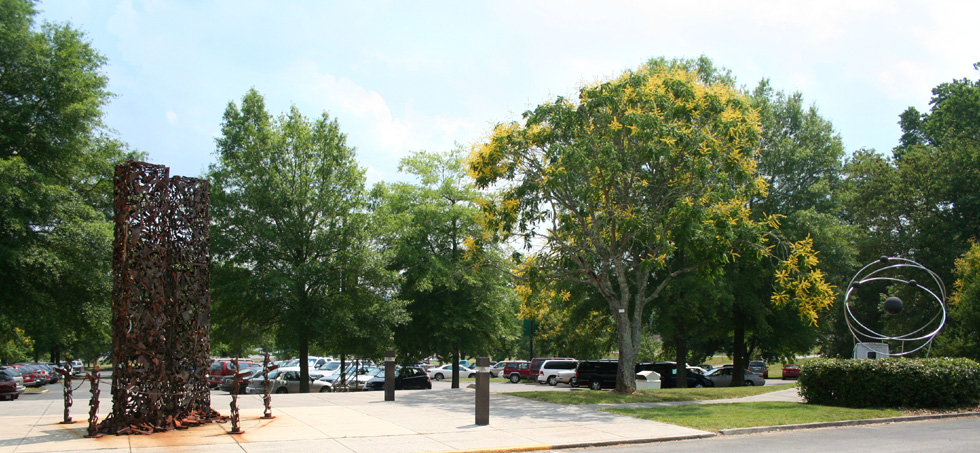 |
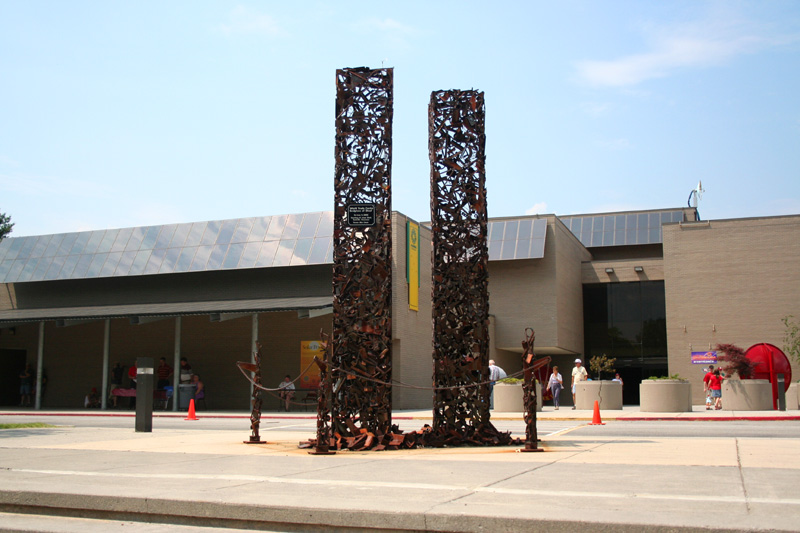 |
The museum has a sculpture garden, which
includes this sculpture of the Twin towers. It is made of bits
of scrap salvaged from the wreckage of the towers themselves. |
 |
This is a sculptural depiction of an atom.
The three electrons in orbit indicate that this is a lithium
atom. |
 |
The majority of uranium 235 used in American
nuclear weapons is isolated via the gaseous diffusion process.
This is the casing for one of the separators used in the
process. |
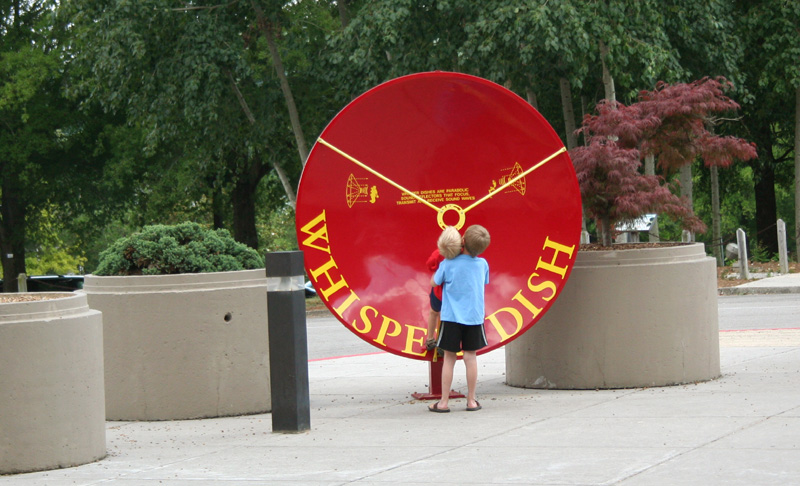 |
Lots of interesting things for kids to do
here. This is part of a pair of parabolic dishes, set on
opposite sides of a large plaza. A whisper in one, is heard
clearly at the other, though it is inaudible in the rest of the
plaza (with the exception of a single spot, about halfway
between). |
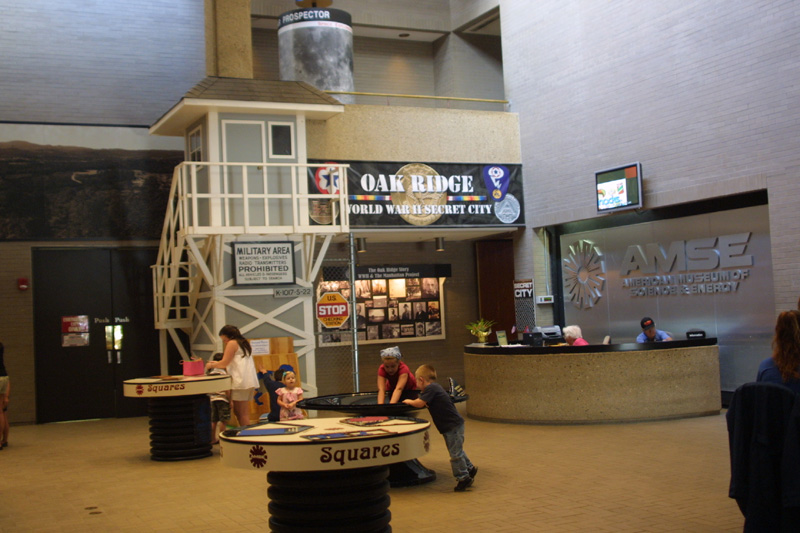 |
Inside of the museum, it can be seen that it
is a large open space, ideal for large groups, seminars, and
teaching. The various sections lead off from the main gallery.
Generally speaking, there is a historical section, a
technological section, a theater, and an administrative section
which also houses the shop. |
 |
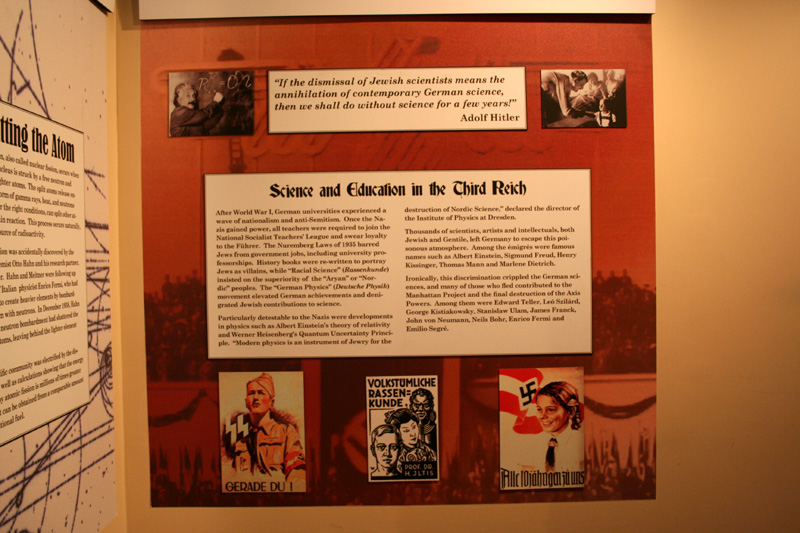 |
This is the beginning of a section explaining
why we had to do it. Germany actually had a pretty good lead, in
development of nuclear technology. |
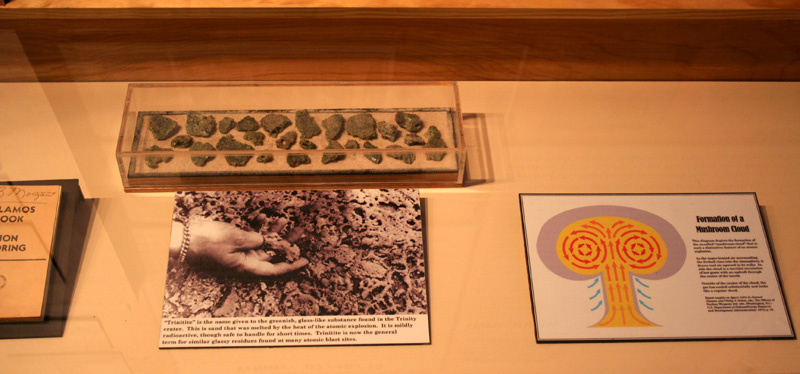 |
Some of the results of what was done here.
The samples above, are of Trinitite, the slightly radioactive
glass formed from the sand of the first nuclear test. |
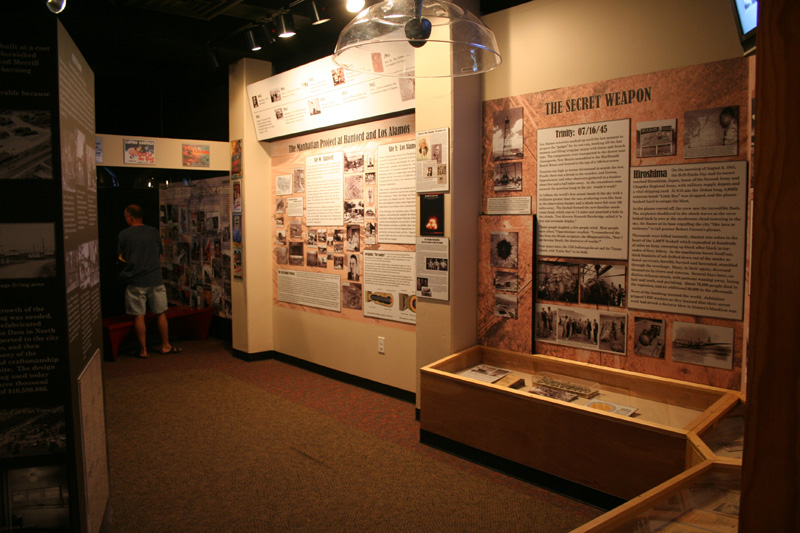 |
An assortment of graphics and artifacts
related to the production of nuclear materials, and nuclear
bombs. |
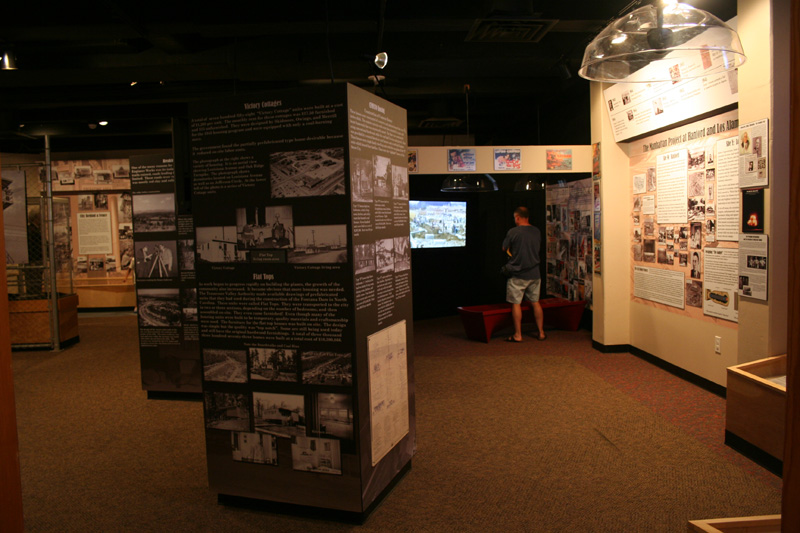 |
A little bit better look at the main
historical gallery. |
 |
An exhibit detailing the late war in the
Pacific, and in particular, the 509th composite group, which was
to drop the nuclear bombs on Japan. |
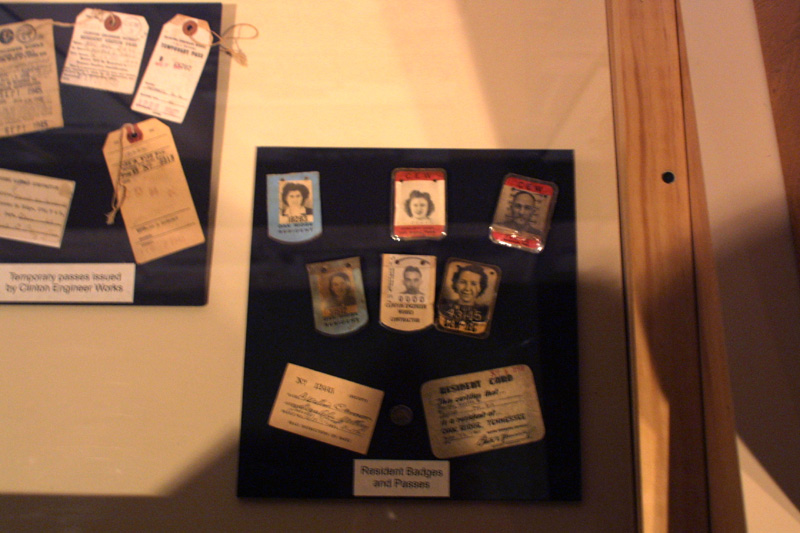 |
Various badges, tags, cards, and passes, the
paraphernalia of secrecy in the forties. |
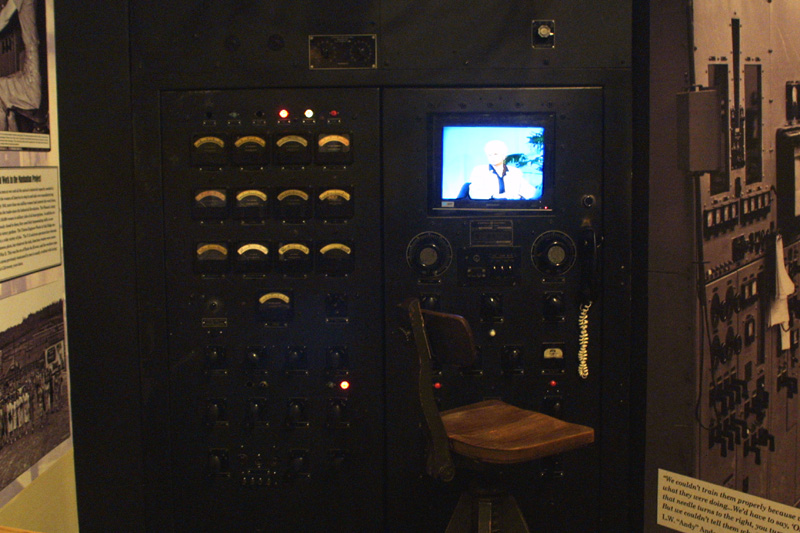 |
This is an operator station, for one of the
1152 Calutrons used in the Y-12 plant. I suspect that this unit
did not originally have the television set built in. The
operators had no idea what they were actually doing. They just
knew to keep the dial needles centered over certain numbers, and
were taught who to do so, by manipulation of the various dials
and switches. |
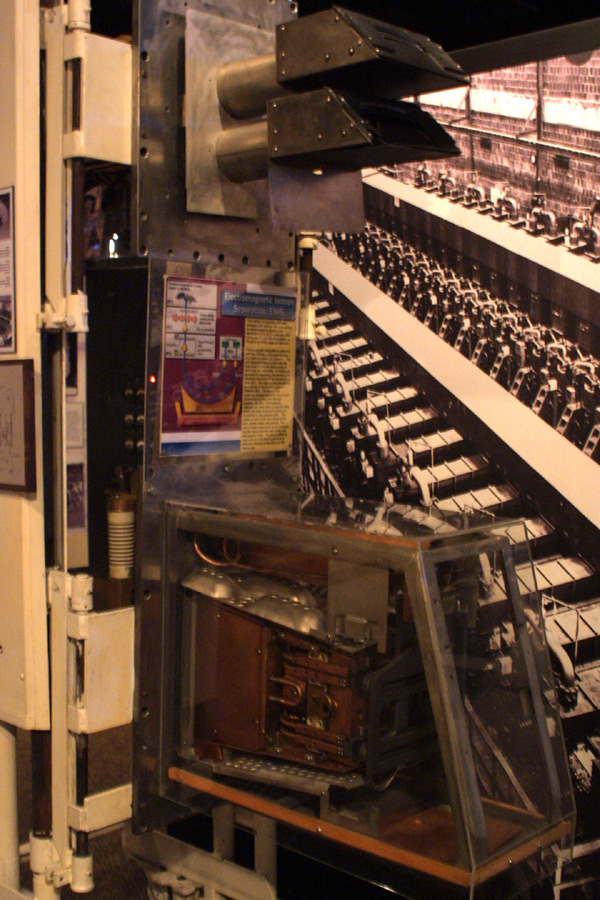 |
The heart of the two major methods for
separating U235 are shown here. To the left is a Calutron, which
used magnetic fields to separate the isotope. Below is the
prototype for the gaseous diffusion method, which ended up being
the preferred method. For a short time, out of desperation, both
methods were used, with the early gaseous plant delivering
somewhat enriched uranium, for final enrichment by Calutron.
There was also a third method used, thermal diffusion at the
S-25 plant; but this was found way too inefficient, and the
plant was closed down immediately after the war. The Calutrons
were also abandoned, eventually, when the fully developed
gaseous diffusion process turned out to be a far better and far
faster way to produce the required U235. |
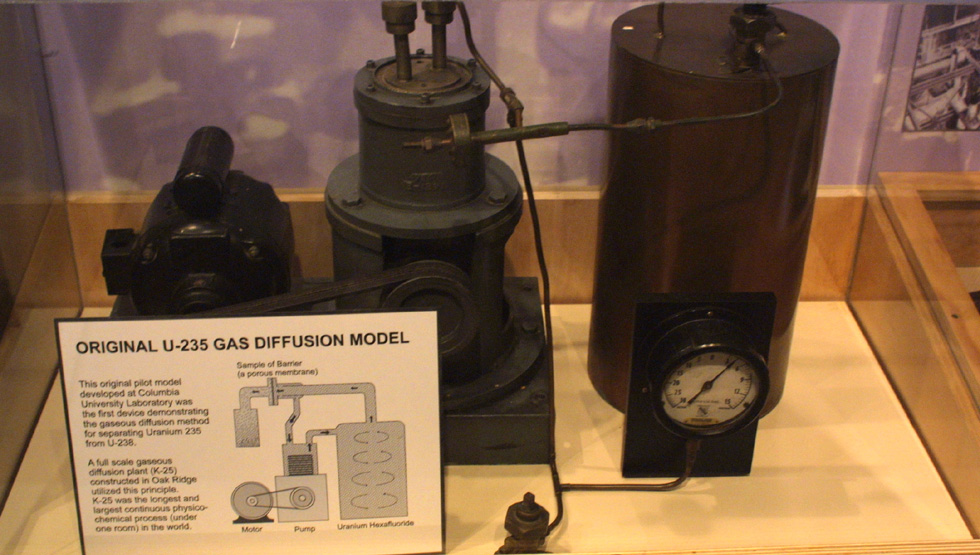 |
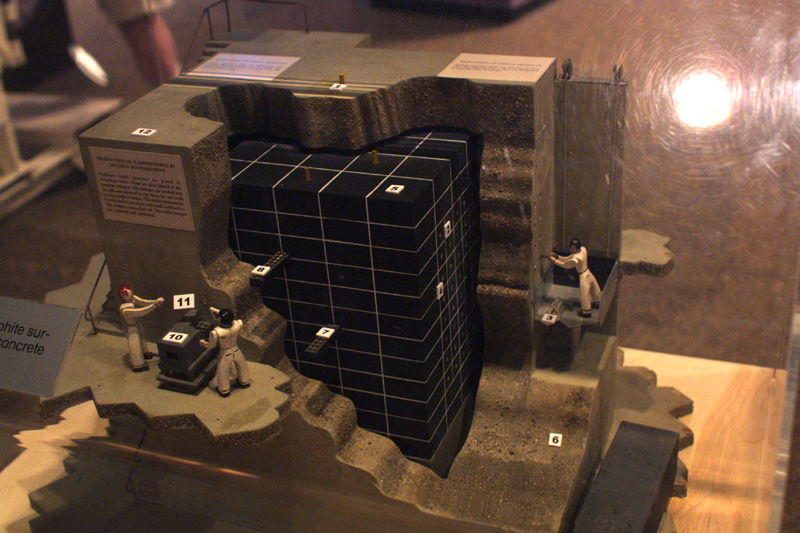 |
A model of the older, graphite type reactor,
which is still in use in Eastern Europe (though not here). This
is the style of the original X-10 reactor, and of the very first
reactors (CP-1, and CP-2), which were built in Chicago by Fermi.
Though this type of reactor is ideal for producing plutonium, it
is not such a good design, due to safety considerations, for
power production. |
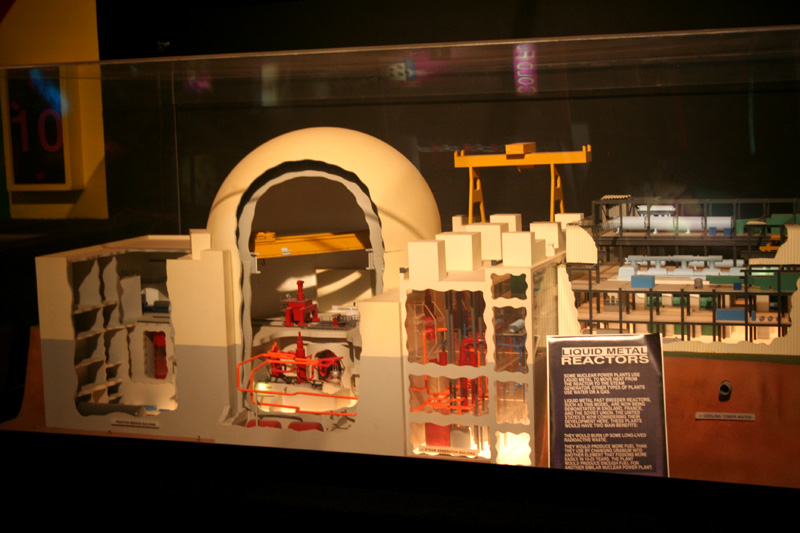 |
This is the new reactor design, from the
eighties, which promises to provide all of the energy we could
possibly want, for thousands of years, or perhaps even longer.
Sorry to soapbox here, but as long as democrats and greens have
any sort of influence over energy policy, these will never be
built. They are responsible for much of our current energy woes,
and seem determined to see to it, that such a situation
continues. |
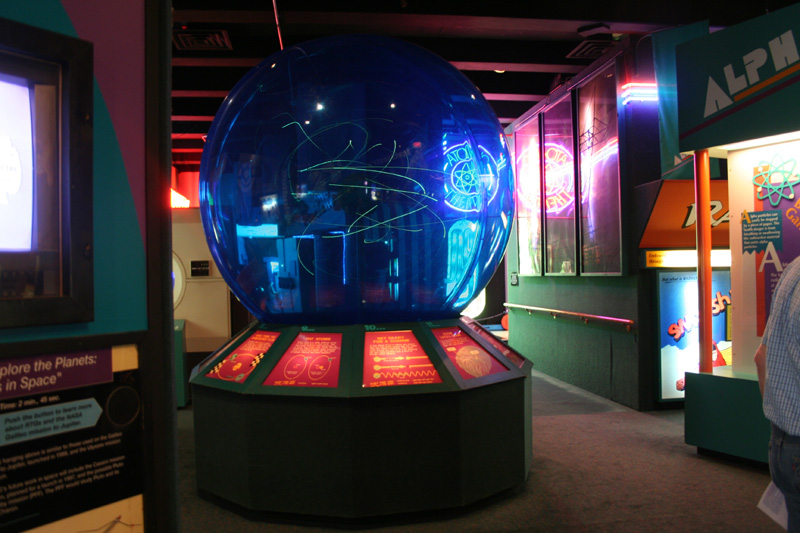 |
A motorized depiction of an atom, with little
spinning lights for electrons. This heads and introduces the
technical section. |